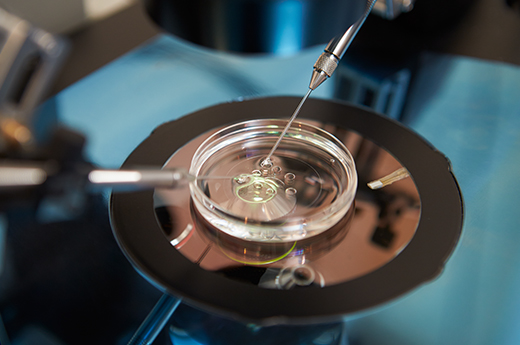In vitro fertilization (or IVF) is a process where the embryos are grown in a culture system, inside the lab, mimicking the in vivo environment required for their growth and development.
An In-vivo embryo development involves 2 stages i.e., the pre compaction stage and the post compaction stage.
- During the pre-compaction stage (D1, D2, D3), the embryo remains in the fallopian tube and there it is provided with energy substrates like pyruvate/lactate, NAA. Due to low biosynthetic activity during this stage, they require low oxygen concentration.
- During post compaction stage, as the embryo develops (D4, D5/D6), they move from fallopian tube towards uterus, where, with the development, the energy substrate changes from pyruvate to glucose. Due to high biosynthetic activity during their development, they require high oxygen concentration.
While mimicking the in vivo developmental process of embryo in the laboratory, we need to provide the embryo with all the necessary components required for their invitro growth. To fulfill this requirement, embryo culture media is used.
Embryo culture media has 2 main concepts; BACK TO NATURE (Sequential culture) and LET THE EMBRYO CHOOSE (Single step culture).
- Sequential culture media: in this culture condition, the exact in vivo development is mimicked. Here, D1-D3 (Day 1 to Day 3) embryos are grown in a culture media provided with components present in fallopian tube (Pyruvate and Lactate). From D4-D5/D6), they are shifted to different culture media that has components present in uterus (Glucose).
- Single step culture media: With the advancement in time, culture medias were improvised to provide undisturbed culture environment to the growing embryos. The media consists of all the components from pyruvate to glucose, for the embryos to choose required energy substrates according to their developmental stage.
Here in IVF access, we have an optimum culture condition, where the embryos are cultured, we have created state-of-the-art labs consisting of:
- High-end air handling units (AHU) that has optimized heating, ventilation, and air conditioning system (HVAC). Our AHUs are provided with HEPA (High efficiency particulate air filters) that eliminates volatile organic compounds (VOCs) in the IVF lab.
- Most modern incubators (with an inbuilt Tri-gas system) for culturing the embryos, which mimics womb of the mother.
- Exhaustive and periodic checks in our lab for optimum embryo growth
- Precise culture condition temperatures at 37 degrees Celsius
- Precise CO-2 and O-2 gas levels maintained at 6% and 5% respectively. Even our gas supply pipelines are provided with inline filters to eliminate VOCs that may directly affect the development of embryos
- Closed Culture: In order to maintain the pH of media droplets and to avoid media evaporation during the culture, we follow closed culture system, where the culture media is overlaid with oil. Thereby, we ensure that all the necessary conditions required for the normal development of an embryo is maintained.
We ensure that every step of the way we combine our rigorous protocols with highly trained clinical staff to provide the best possible outcomes


Leave a Reply